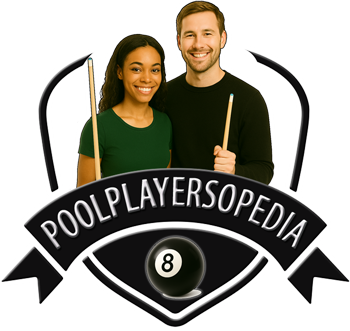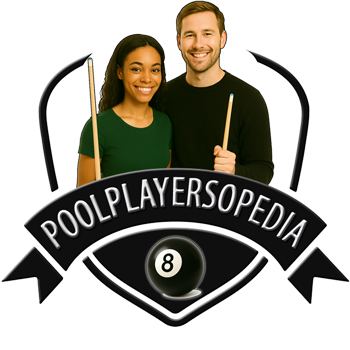



Trending
PoolPlayersOpedia – Your Ultimate Source for Everything Pool and Billiards
Author: J H McIntosh
PoolPlayersOpedia Podcast (press play)
Welcome to PoolPlayersOpedia, where passion, precision, and tradition come together on the green felt. Here, we celebrate a game that has captivated minds for centuries, a game of geometry, patience, and grace. Whether you’re just learning to chalk a cue or have spent decades breaking racks, this is your home base for everything that makes cue sports so endlessly fascinating.
Our mission is simple: to inform, inspire, and connect those who love the game, not just as players, but as students, teachers, and storytellers. From timeless legends to modern innovations, from local halls to world championships, PoolPlayersOpedia explores every corner of the billiards universe through ten core areas of focus.
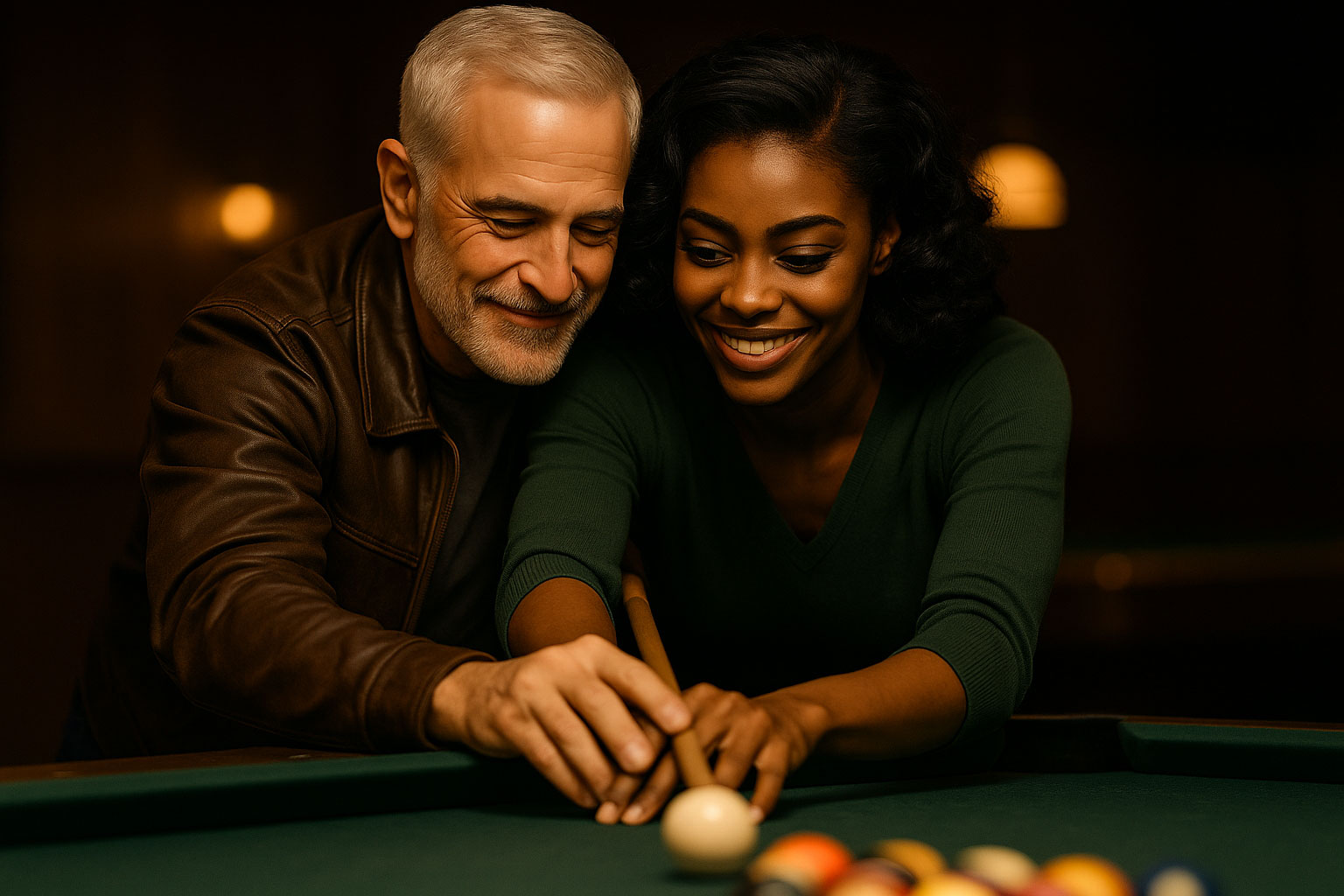
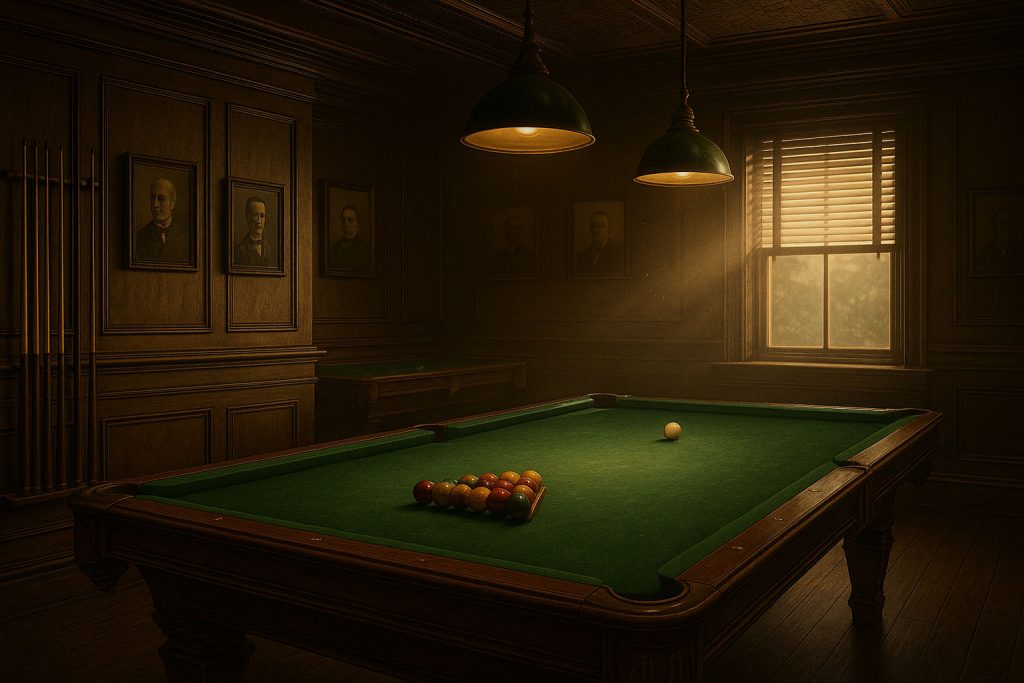
Billiards didn’t begin in a smoke-filled bar or a neon-lit arcade, it started in the royal courts of Europe. In the fifteenth century, aristocrats played a version of lawn games indoors on tables covered with green cloth meant to mimic grass. The cue stick evolved from a “mace,” used to push rather than strike balls. The game grew sophisticated over the next two hundred years, spreading through France, England, and eventually across the Atlantic to America.
By the 1800s, billiards had become a symbol of intellect and refinement. Public rooms opened across major cities, often doubling as social clubs. The term pool originally referred to a betting collective, a “pool of stakes”, until the name stuck to the game itself. Straight pool, carom, snooker, and later 8-ball and 9-ball each reflected new cultural rhythms and regional preferences.
In the United States, figures like Willie Hoppe and Willie Mosconi turned precision into poetry. Decades later, Minnesota Fats, Efren “Bata” Reyes, and Allison Fisher carried the torch to new generations. Each era left its mark, not just on the rules of play but on the way people understood competition, honor, and focus.
At PoolPlayersOpedia, we preserve that legacy. Understanding the history of pool isn’t nostalgia; it’s context, a reminder that every shot we take connects us to those who came before.
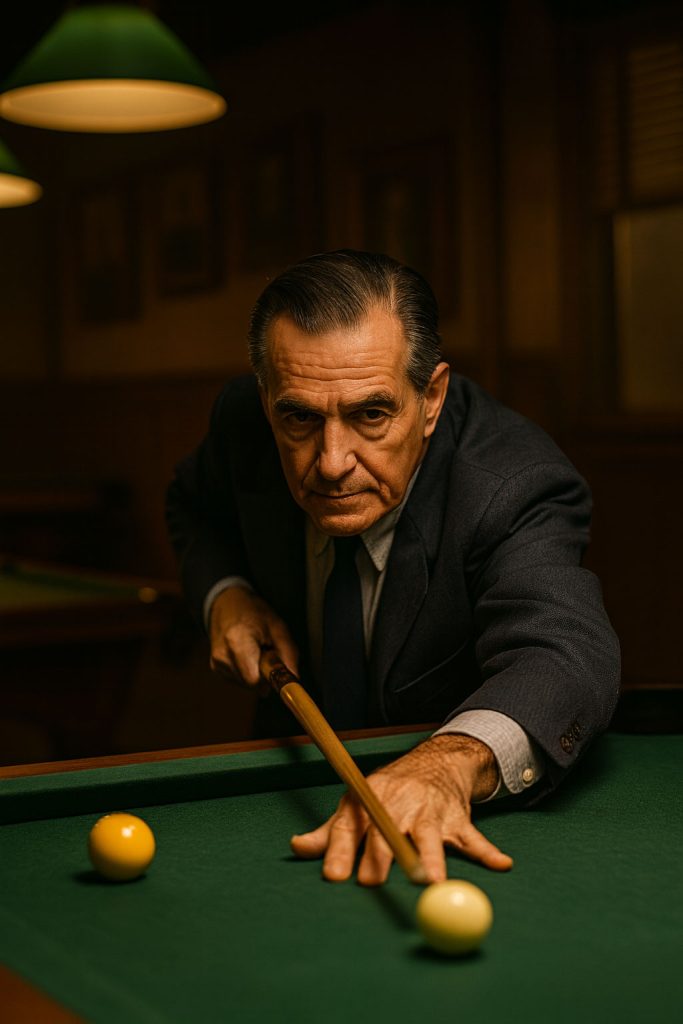
Greatness in pool isn’t just about sinking balls, it’s about composure, imagination, and heart. The legends of cue sports have always combined technical brilliance with a sense of theater, captivating fans and intimidating rivals.
We pay tribute to timeless icons: Willie Mosconi’s disciplined dominance, Ralph Greenleaf’s showmanship, Jean Balukas’ pioneering spirit, Efren Reyes’ magical creativity, and Allison Fisher’s elegant precision. Their names are etched into the game’s lore not simply because they won, but because they elevated pool into art.
Yet legends aren’t confined to history books. Today’s rising stars, from Joshua Filler to Fedor Gorst, Kelly Fisher, and Ko Pin-Yi, are pushing boundaries with technology-enhanced training and global competition. Their influence stretches from televised events to online streaming platforms, inspiring a new generation of players to take their first break.
Each profile in this section goes beyond trophies and stats. We dive into backstories, philosophies, signature techniques, and the moments that defined their careers. Some overcame poverty; others battled prejudice or burnout. But all of them shared one trait, an unshakable love for the game. PoolPlayersOpedia believes legends aren’t born on the final shot; they’re built through years of quiet practice when no one’s watching.
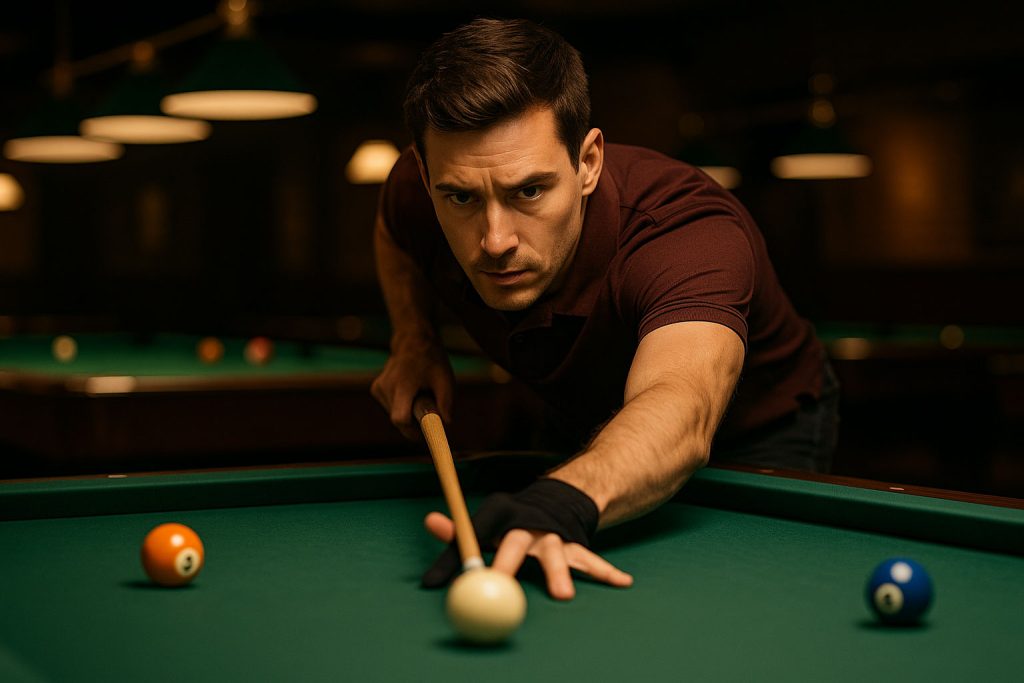
The best players in the world agree on one thing: confidence starts with familiarity. Your cue, your chalk, your bridge—these are extensions of your body. At PoolPlayersOpedia, we explore the craftsmanship behind every piece of gear that transforms raw skill into repeatable excellence.
We review cues from the industry’s most respected makers—Predator, McDermott, Meucci, Joss, and Pechauer—comparing construction, balance, shaft technology, and feel. We explain the subtle science of low-deflection shafts, layered tips, and carbon-fiber composites. Whether you prefer a forward-weighted cue for finesse or a rear-heavy build for explosive breaks, you’ll find insight into what fits your style.
We also cover accessories that serious players swear by: chalks that hold their edge, cue cases that protect against warping, gloves that reduce friction, and training tools that sharpen accuracy.
Our table guides delve into slate leveling, cushion rebound testing, and the choice between tournament-grade and home cloth. You’ll even learn how lighting, humidity, and ball polish can alter gameplay.
The right gear doesn’t make a champion, but it removes obstacles—and at PoolPlayersOpedia, our mission is to clear your path to perfect play.
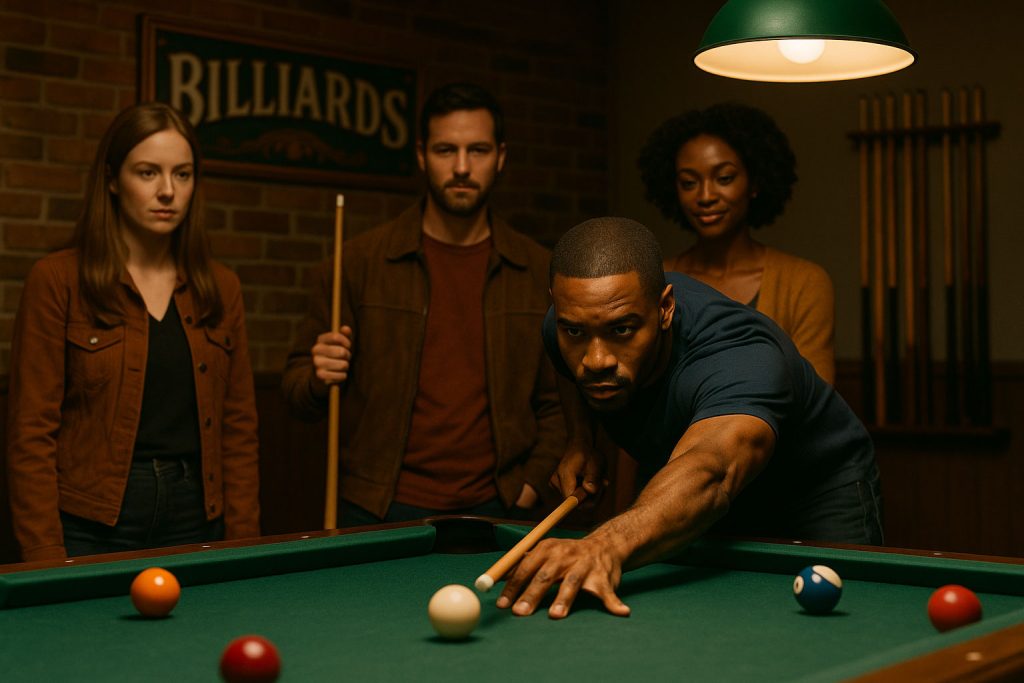
Every pool player has faced that moment, leaning over the table, cue poised, when someone says, “That’s not the rule!” This section settles those debates once and for all.
We break down the official regulations of the World Pool-Billiard Association (WPA) and explore the nuances of different formats: 8-ball, 9-ball, 10-ball, straight pool, one-pocket, bank pool, and even artistic trick-shot events. Each has its own rhythm — 8-ball rewards strategy, 9-ball demands precision, and one-pocket turns the table into a chessboard of angles and patience.
You’ll also find guides to snooker and carom billiards, where cue-ball control reaches its most delicate form. We explain the origins, objectives, and unwritten etiquette that define each discipline.
Beyond rules, we demystify tournament formats — single elimination, double elimination, round robin, and Scotch doubles — so players understand what to expect before the first break.
Knowledge is power. Whether you’re playing for pride at your local bar or competing in a national league, understanding the rules builds confidence and respect. And when disputes arise, you’ll have the clarity to back your call — gracefully.
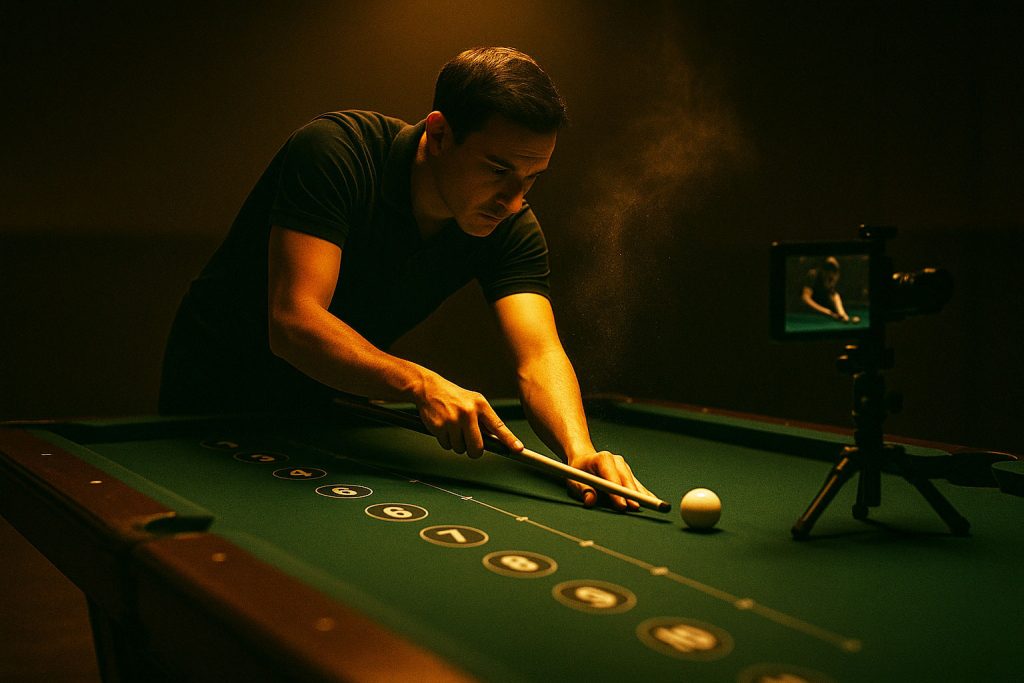
No matter how long you’ve played, there’s always another layer of mastery waiting on the other side of practice. This section is where improvement begins—one shot, one drill, one insight at a time.
We start with the fundamentals: stance, bridge, stroke, and alignment. Then we progress to aiming systems like ghost ball and fractional methods, along with cue-ball control exercises to master draw, follow, and English. Detailed illustrations and slow-motion analyses help you visualize how spin interacts with rails, helping you plan patterns with precision.
But technical skill alone doesn’t win matches—mindset does. That’s why we also dive into performance psychology: breathing through nerves, focusing after misses, and developing rituals that anchor confidence. The best players in the world talk about rhythm, not routine, and PoolPlayersOpedia teaches you how to find yours.
We feature drills from professional coaches, printable practice sheets, and video tutorials you can follow at home or at the hall. Every resource is designed to make improvement measurable, not mysterious. Because in pool, greatness isn’t found in perfection—it’s earned through consistency.
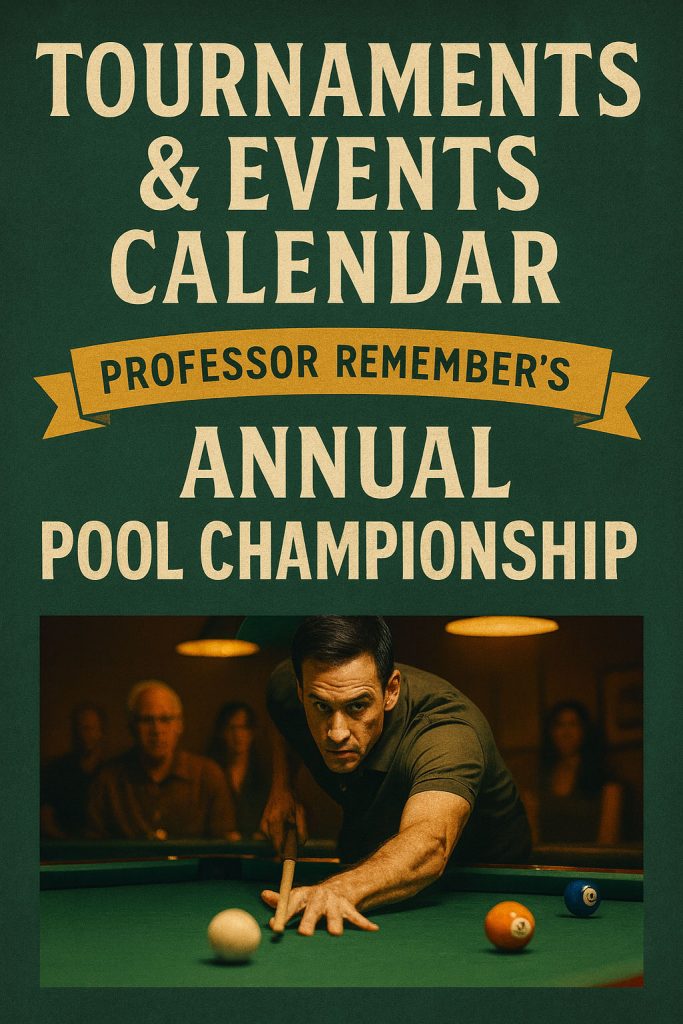
Competition brings the game to life. Every match, from a Friday-night local league to the world stage of the Mosconi Cup, reminds us that pool is as much about people as it is about physics.
PoolPlayersOpedia maintains a comprehensive Tournaments & Events Calendar that covers both major international championships and grassroots gatherings. Follow the World Pool Masters, Derby City Classic, U.S. Open 9-Ball, European Open, Women’s World 10-Ball Championship, and more. We also highlight amateur and charity tournaments that keep the spirit of friendly competition alive in local communities.
Each listing includes key details—dates, venues, prize structures, and live-stream links when available. But we go further: we profile the stories behind the brackets, from the underdog who shocks the pros to the veteran making one last run.
New players can explore our “How to Enter Your First Tournament” guide, covering fees, handicaps, etiquette, and equipment requirements. For seasoned competitors, we feature interviews with promoters and organizers who share insights into what makes a great event.
In short, this section keeps you connected to the heartbeat of cue sports, wherever the next great match is breaking.
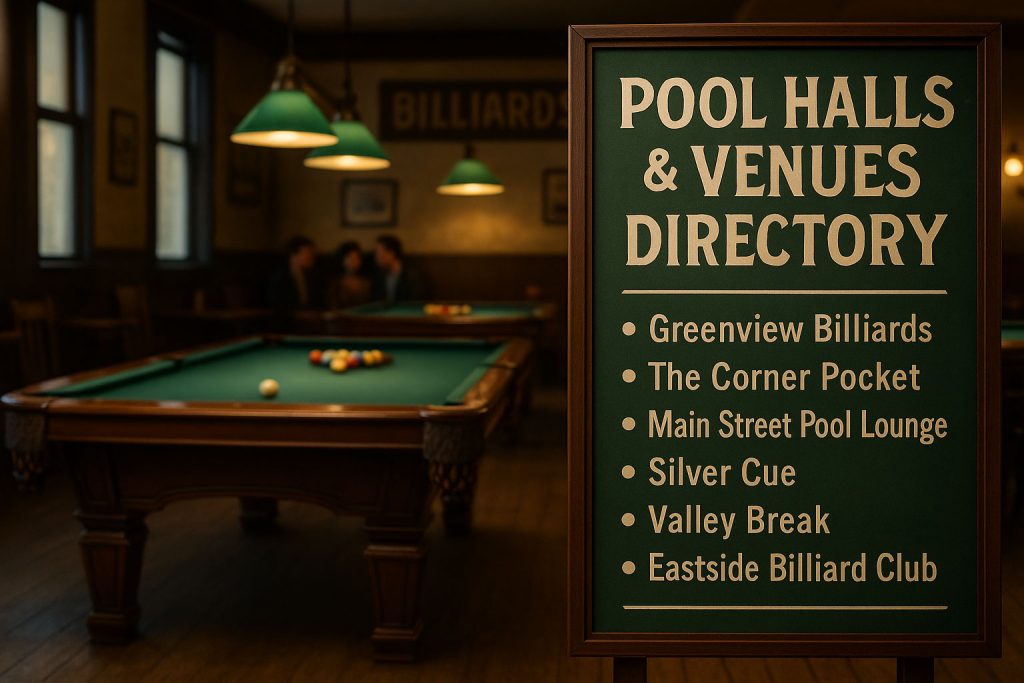
Every player remembers their first hall—the smell of chalk dust, the hum of conversation, the way light pooled across green cloth. Pool halls are temples of the game, places where skill meets friendship and time slows down.
PoolPlayersOpedia curates an ever-growing directory of the best places to play, from iconic venues like Amsterdam Billiards in New York and Hard Times in California to hidden gems in small-town America. Each listing includes details on the number of tables, cloth type, league nights, food and drink options, and accessibility.
We highlight both classic halls with character and modern lounges reinventing the experience for a new generation—complete with live music, craft cocktails, and digital scoring systems.
Players can submit reviews, upload photos, and nominate their favorite spots. Over time, this directory will become a living atlas of the game—a map that connects players not by geography, but by shared passion.
Because every great story in pool begins in a room where strangers become friends and one good shot changes everything.
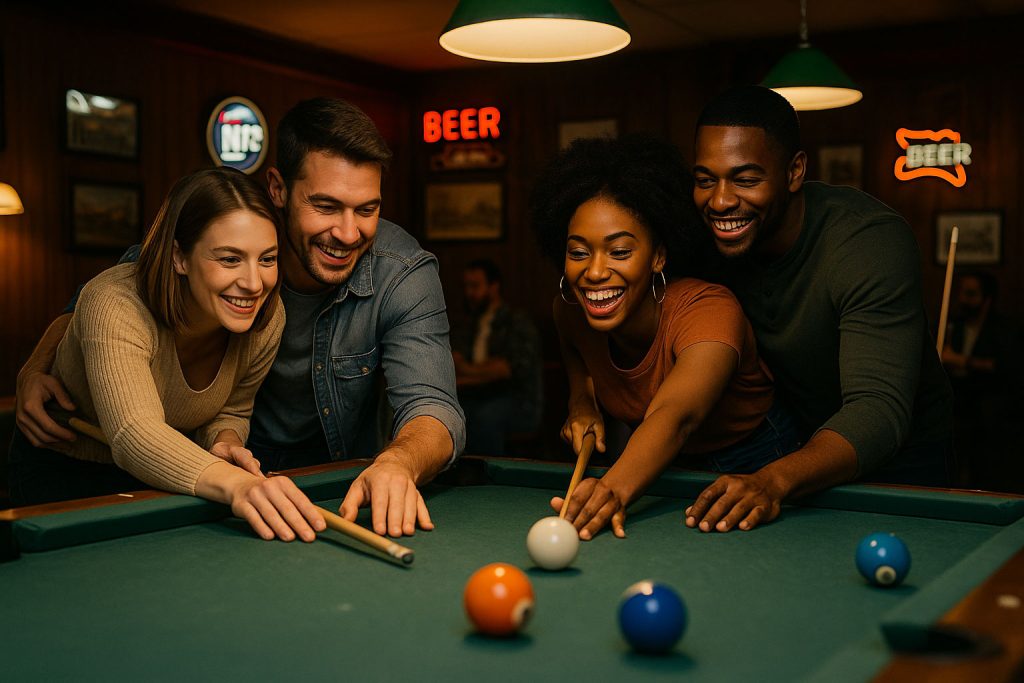
Pool has always existed at the intersection of art and grit. It’s a game of geometry played in smoky light, equal parts science and soul. The Lifestyle & Culture section explores everything that surrounds the table—the stories, the symbols, and the people who make pool a reflection of life itself.
We trace the game’s influence through film and music, from The Hustler and The Color of Money to the songs and bar scenes that made the cue a cinematic icon. We feature fashion trends among players, table design aesthetics, and interviews with artists who capture the game through photography and paint.
You’ll also find essays on the ethics and etiquette of pool—how respect, honesty, and sportsmanship elevate the game beyond winning. And we shine a spotlight on diversity in the sport: the rise of women’s leagues, junior programs, and international representation that has made cue sports truly global.
This isn’t just the cultural backdrop; it’s the heartbeat of the game. Because to love pool is to understand that beauty can live in a single shot, a shared laugh, or the quiet click of two balls finding destiny.
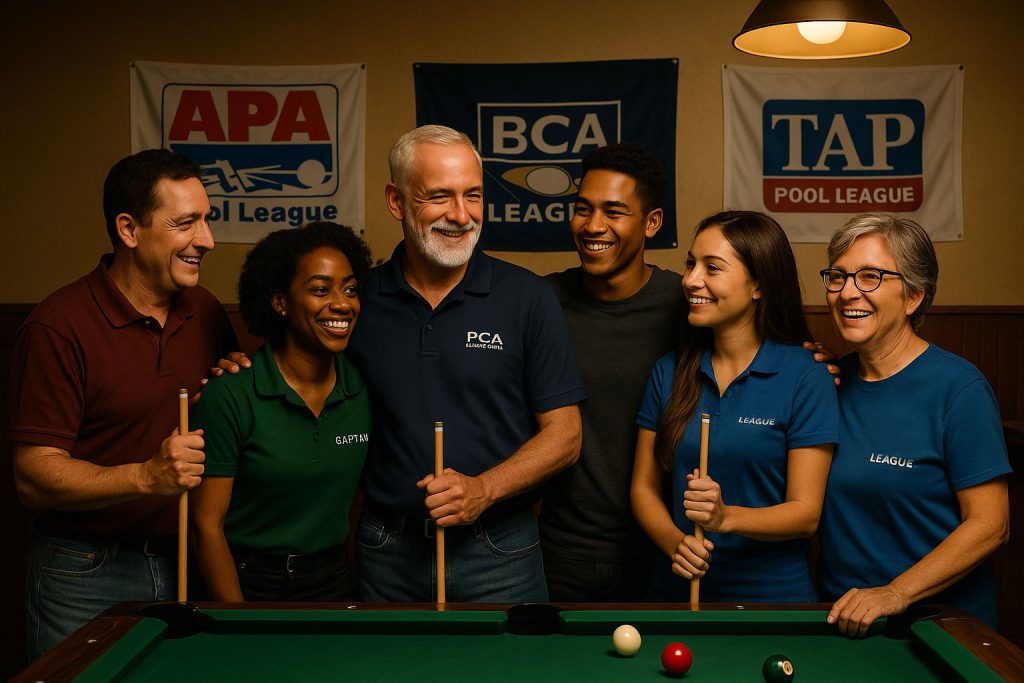
Pool is a solitary art, but a communal experience. No one improves in isolation. That’s why the world’s leagues and communities are the lifeblood of cue sports.
In this section, we showcase major leagues like the APA (American Poolplayers Association), BCA Pool League, TAP League, and countless regional circuits. We explain how handicapping systems work, how to join or form a team, and how leagues foster friendship as much as competition.
We also feature community-driven stories: local fundraisers, youth outreach programs, and veterans’ clubs that use the game as a form of connection and healing. Social media groups, Discord communities, and YouTube instructors are transforming how players learn and share, creating a global classroom where everyone’s invited.
Through interviews and spotlights, PoolPlayersOpedia highlights the people who make the game inclusive—the mentors who teach without judgment, the hall owners who host tournaments for free, the teammates who turn strangers into family.
In every sense, this is the “people’s” section—a reminder that while the cue may be personal, the journey is shared.
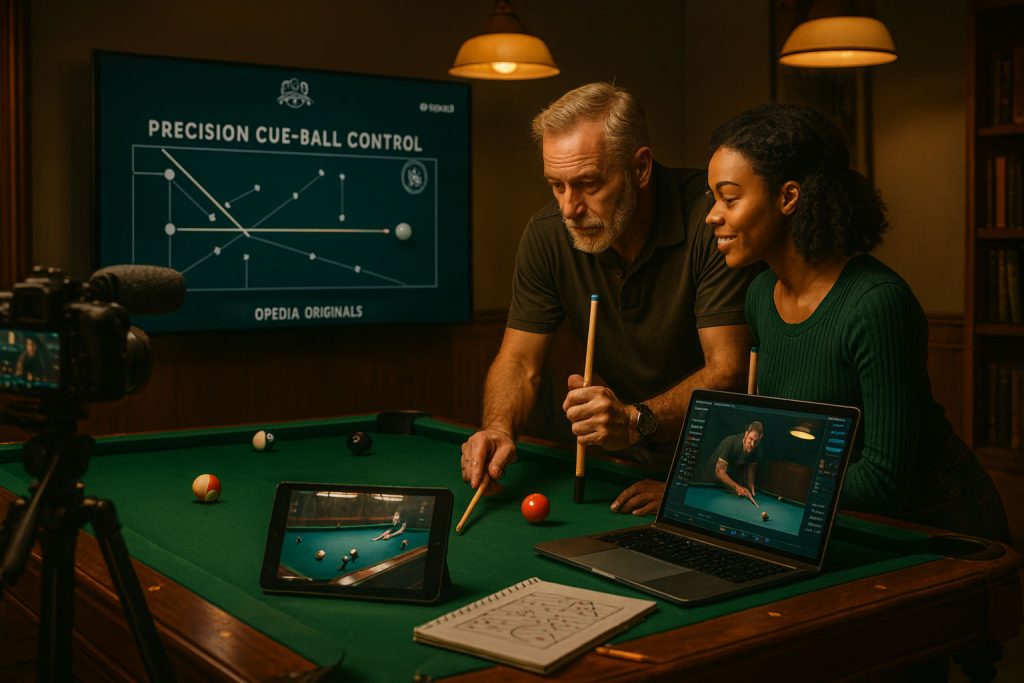
Learning pool has never been more accessible, and never more exciting. The Learning Zone at PoolPlayersOpedia is your interactive classroom, bringing together experts, coaches, and storytellers to guide players of all levels.
Here you’ll find video tutorials, step-by-step training courses, and audio podcasts that break down both technique and philosophy. We partner with professionals and certified instructors to produce clear, engaging lessons on topics like cue-ball control, kick safety systems, break-building, and competitive focus.
Each tutorial is accompanied by written transcripts, diagrams, and downloadable practice sheets. We also host Opedia Originals—interviews and discussions recorded in real pool halls, where wisdom comes with the sound of clinking glasses and laughter in the background.
And because the learning journey never ends, we feature reader-submitted videos, expert commentary, and evolving playlists you can stream on the go. Whether you learn best by watching, listening, or doing, the Learning Zone keeps you growing, rack after rack, day after day.
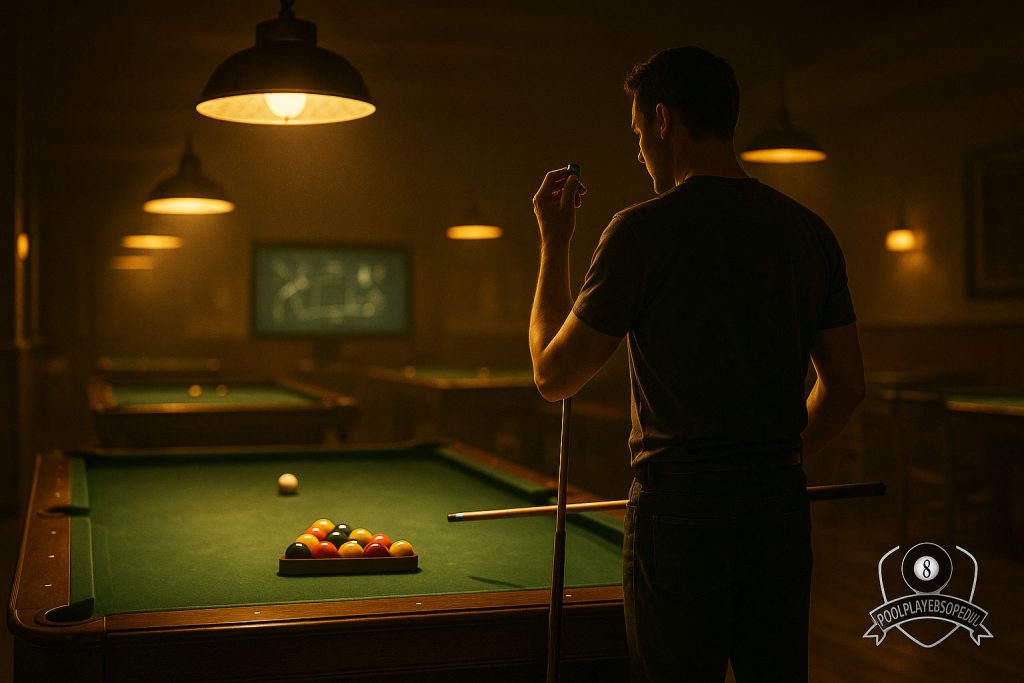
PoolPlayersOpedia isn’t just a website—it’s a community built on respect for the game and the people who love it. Every player, from beginner to master, shares the same moment of quiet anticipation before a break: the stillness before motion, the calculation before instinct.
That’s what we honor here. The craft, the concentration, and the camaraderie that make pool timeless.
So take a deep breath. Chalk your cue. And wherever you’re standing—at home, in a hall, or halfway across the world—remember that you’re part of something much larger than the game itself.
Welcome to the table. Welcome to PoolPlayersOpedia.
*Aaron Rizzer, (a/k/a Professor Remember) and Belle Marie Belizaire are fictional characters in the four Jimmy Rogers Chronicles novels written by J H McIntosh.
“Can’t Stop It,” the first novel is a coming of age/murder mystery where teenager Jimmy Rogers is in a battle to break from his Father’s belief “Life is a cruel joke, barely worth living”.
If Jimmy loses this battle, he will take his own life and the deaths of his best friend David Perkins and David’s girlfriend Cathy Carlson will go unsolved.
Aaron is the founder of Professor Remember’s Roadhouse and Bakery Café, where he first met Belle the day she applied for the hostess job at Remembers.
For more information about the characters and events in “Can’t Stop It” go here. Download any of the 50 original songs that highlight events in the stories here.
